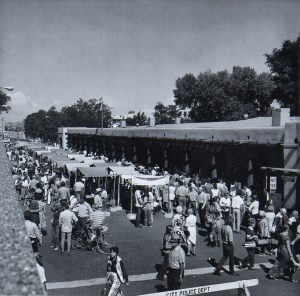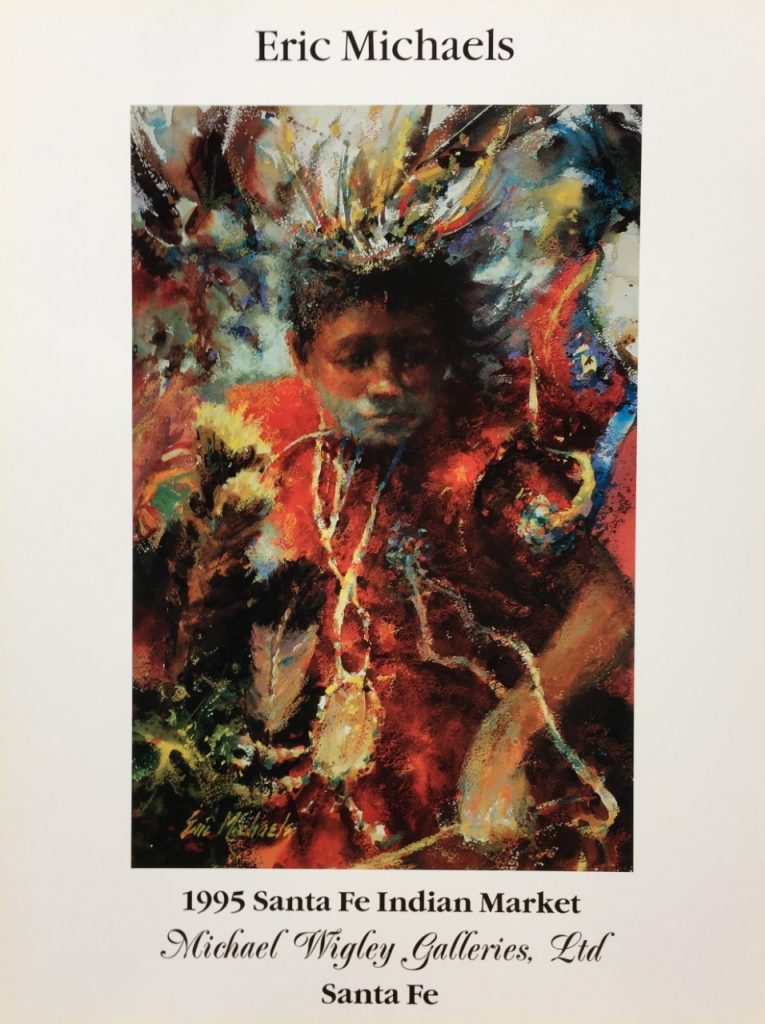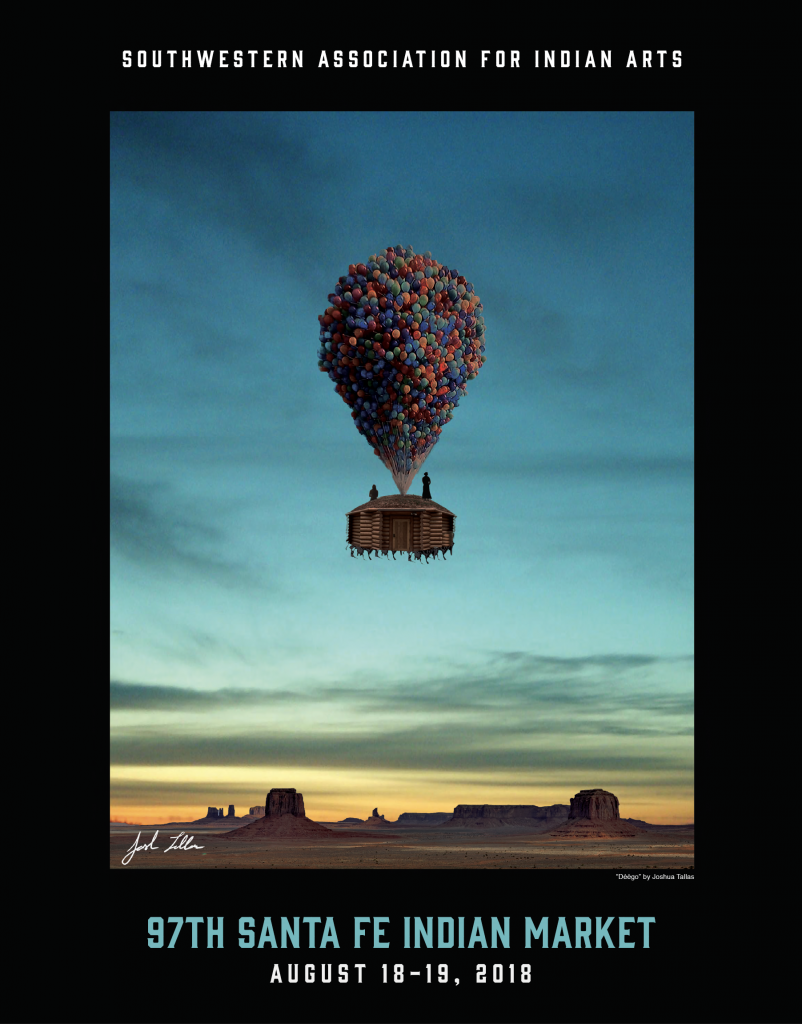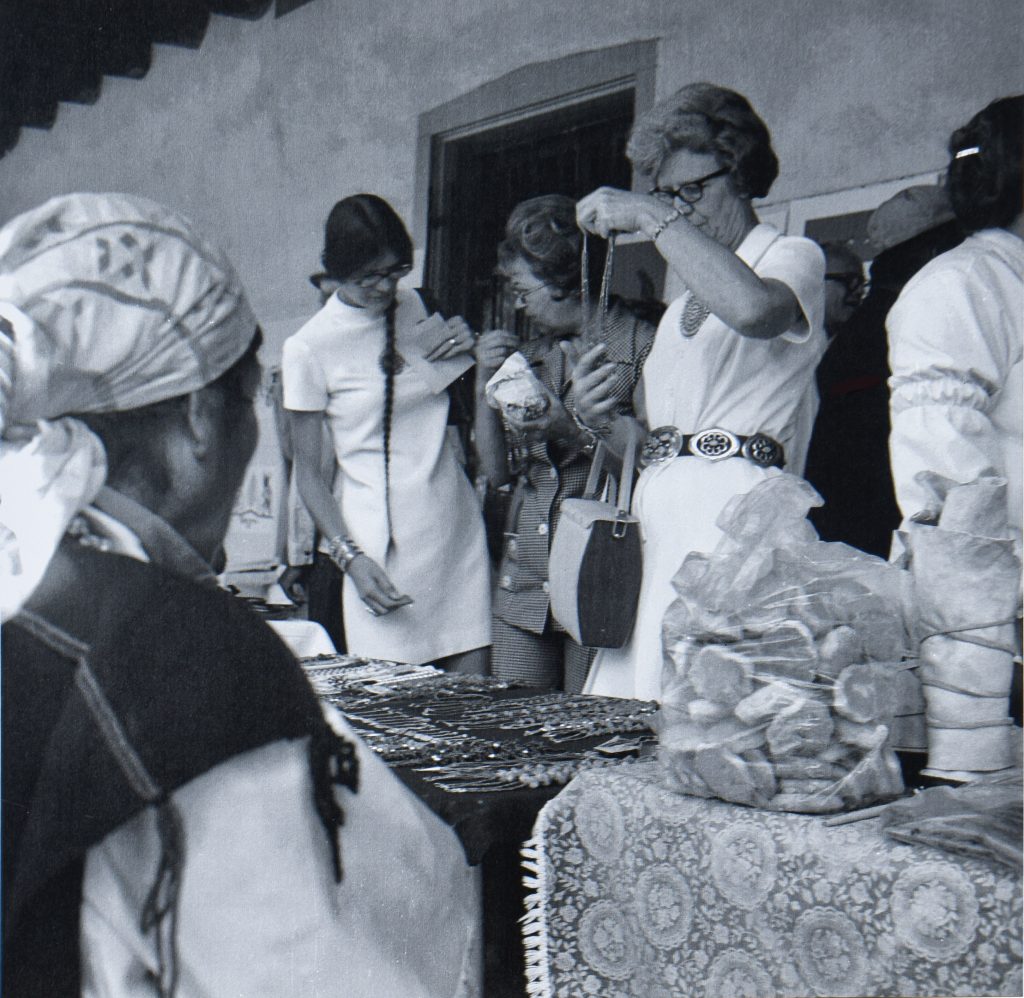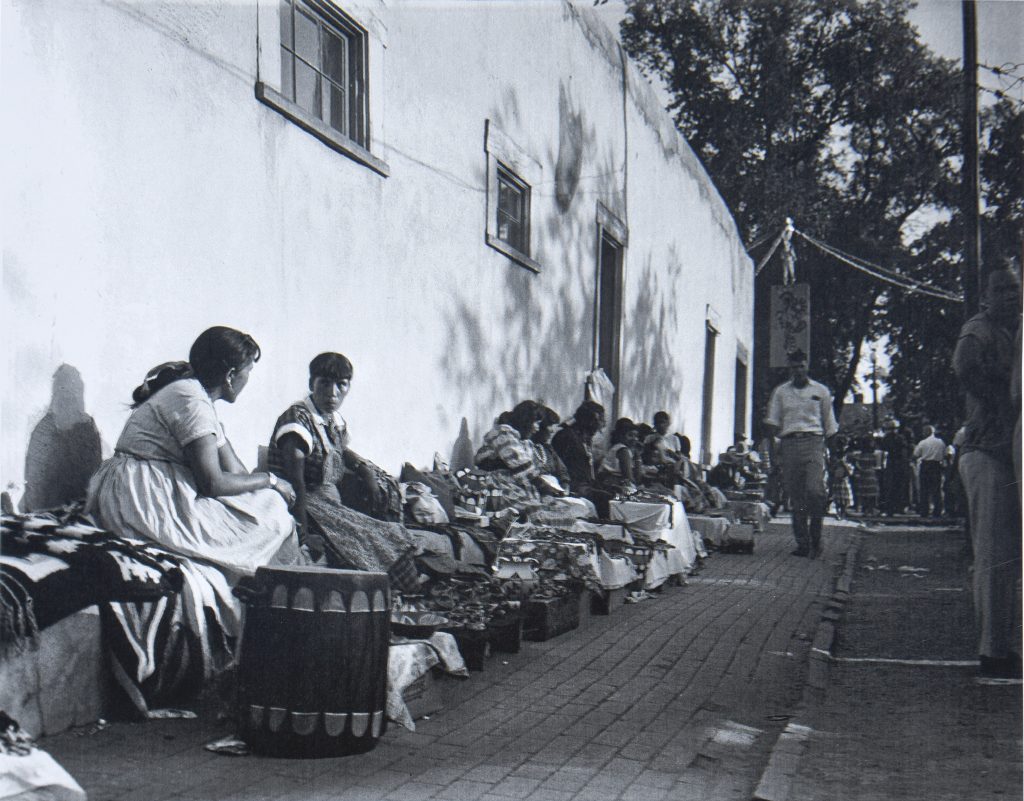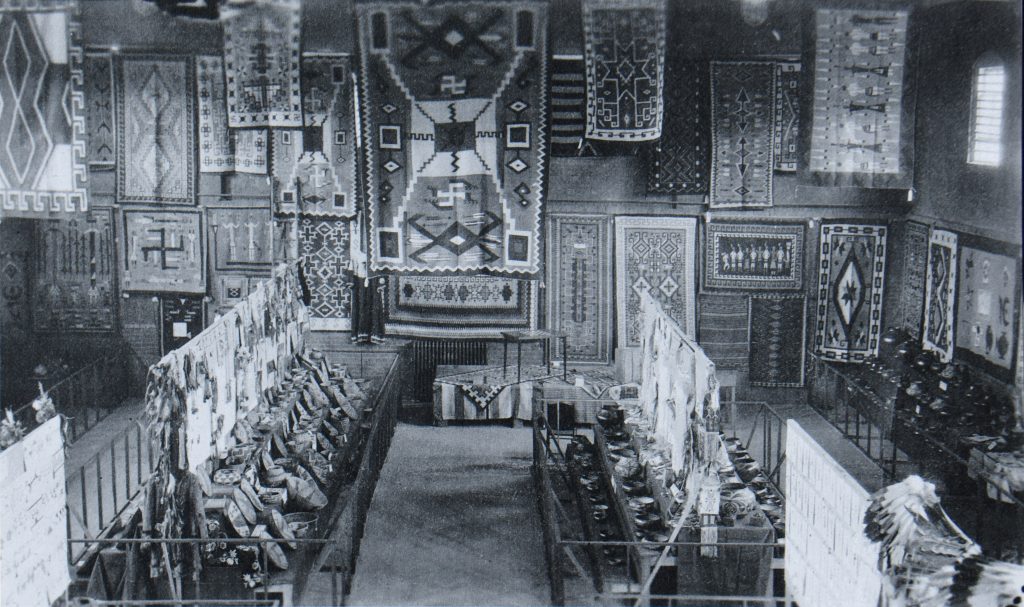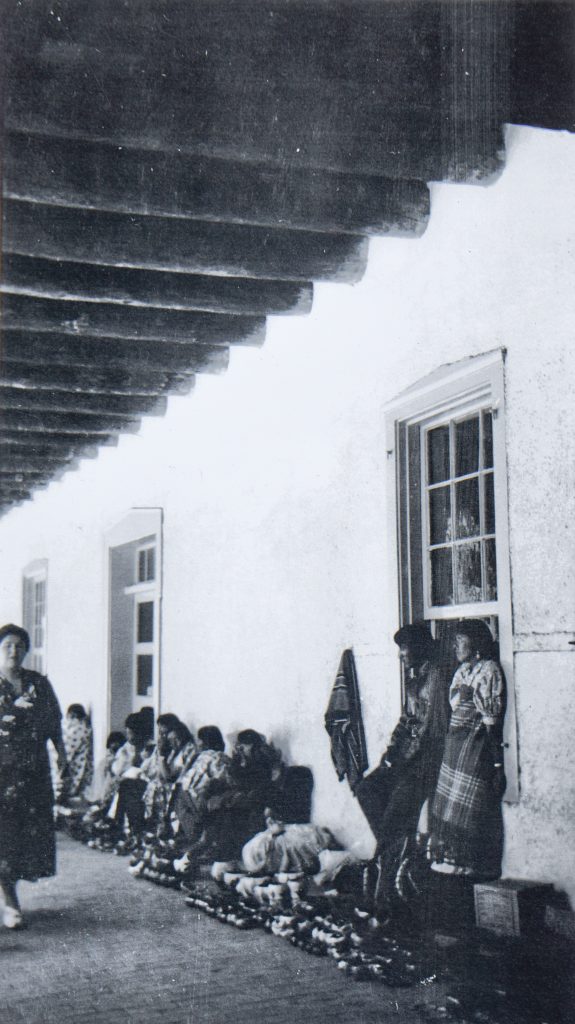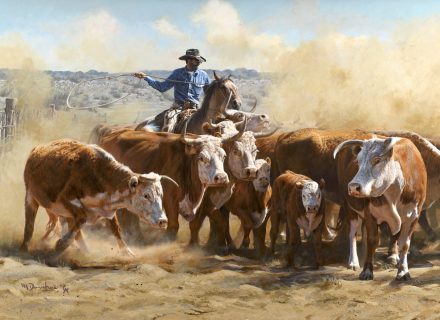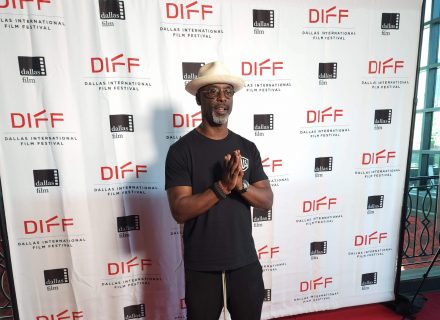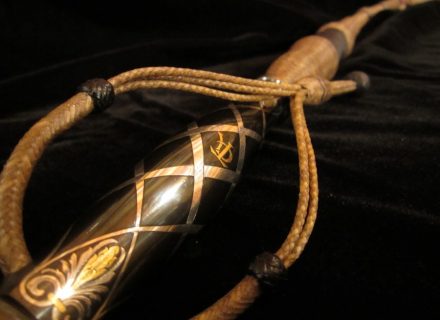We trace and celebrate the journey of the Santa Fe Indian Market from then to now.
The economy was booming in the wake of World War I. It was the beginning of the Roaring Twenties. Optimism spread through society. Duke Ellington was becoming a jazz great. Flapper fashions were the rage, with hemlines rising. It was 1922.
In Santa Fe, New Mexico, the first Indian Fair was held by the Museum of New Mexico as part of Santa Fe Fiesta. Conceived by museum director Edgar Lee Hewett as an opportunity to appreciate Indian art and crafts, the fair was a small event held in the National Guard Armory and on an adjacent patio. It included pottery, Navajo weaving, sand painting, silver jewelry, beadwork, and Indian dances.
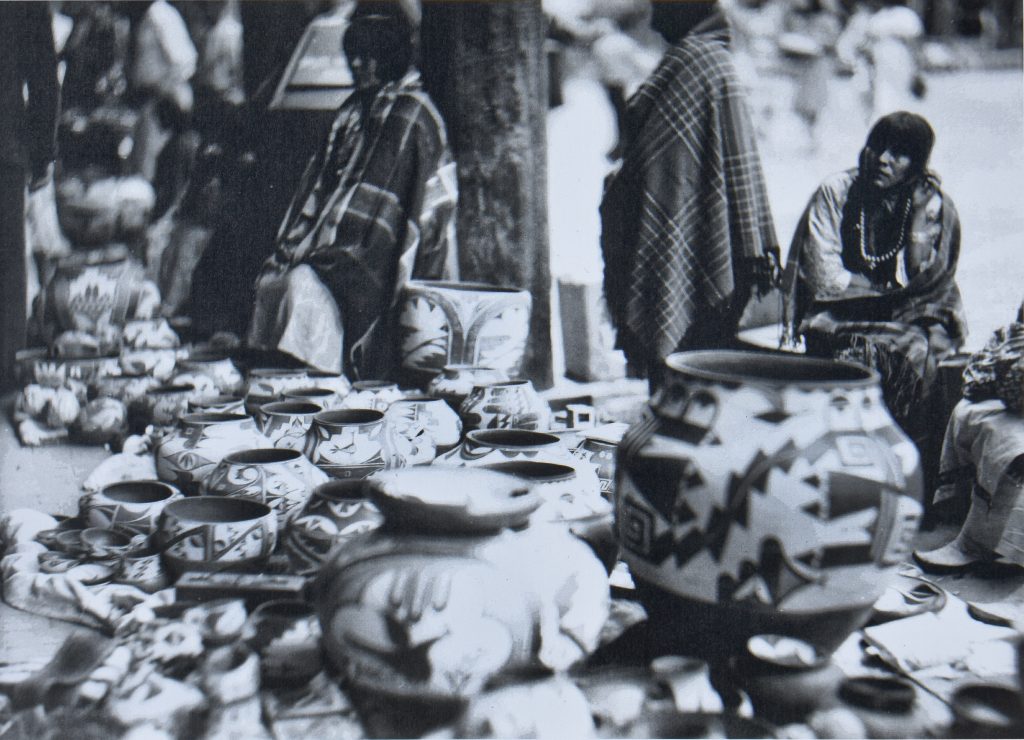 Zia pottery vendors under Palace of the Governors portal, 1938.
Zia pottery vendors under Palace of the Governors portal, 1938.
“It was an awareness and sort of a movement to try to save what was left,” surmises Cathy Notarnicola, curator of Southwest history at the New Mexico History Museum. “About the time Indian Market started in 1922, you had what people call salvage anthropology. People were starting to notice the making of Native goods was diminishing because of the policies of removal and reservation and assimilation.”
The first markets were run by mostly Anglo museum staff who did the selling. In 1936, Native artists began selling their own work. As the ’40s and ’50s ensued, the fairs continued while the Great Depression, the Dust Bowl, and World War II shook the nation, and radio, big bands, and Frank Sinatra dominated entertainment.
It was in the ’60s that Indian Market really took off.
“In the ’60s and ’70s, there is renewed interest in Native culture and Native arts,” Notarnicola says. “There were protests, activism, movies like Billy Jack, and it was the era of self-determination and a movement for Native activism.”
Then, in the ’70s and ’80s, “The art form is elevated from craft to fine art,” she says. “A lot of contemporary artists push boundaries. You see new generations of artists. It leads up to today — the popularity of Market, how it went from humble beginnings to the largest juried art competition for Native American art.”
ABOVE: Crowds on Palace Avenue, 1971.
Photography: Courtesy of Palace of the Governors Photo Archives, Negative 132581
San Idelfonso potter Russell Sanchez became involved with Indian Market in the ’70s when he was 12.
“All the top potters were my idols,” he recalls. “I won best of pottery! I was 16. I was so thrilled. I was studying to become a lawyer. Two weeks before graduating I said, absolutely not; that’s not what I want to do. I continued with school, but pottery took over. That’s where my passion was.” Sanchez still enjoys showing at Market and is now represented by King Galleries Native American Collection and Blue Rain.
The 100th Santa Fe Indian Market in August of 2022 featured hundreds of exhibitor booths lining the Santa Fe Plaza and spread outward for blocks with the creations of roughly 1,000 artists from 250-plus federally recognized tribes from the U.S. and Canada. Usually referred to as “Indian Market” or just “Market,” it attracts as many as 150,000 people annually. VIP attendees have included Ruth Bader Ginsburg, Tom Ford, Wes Studi, Robert Redford, Diane Keaton, Ali MacGraw, Zahn McClarnon, U.S. poet laureate Joy Harjo, and U.S. Department of the Interior Deb Haaland.
“I think what’s made it so popular is you can buy directly from the artists and talk to them,” says Notarnicola, who oversaw a New Mexico History Museum exhibit in the summer of 2022 that commemorated 100 years of Indian Market.
“It’s the main event of any of the Native markets out there,” says Navajo jeweler Cody Sanderson, who travels the world selling his hand-forged silver bracelets and rings everywhere from his hometown of Window Rock, Arizona, to Australia to Taiwan and Tokyo. “It’s the longest one. It’s going on a century, the 100th anniversary.” Which is why Sanderson plans to be on hand with his bold designs this year, both in jewelry and fashion.
The past few years have been unpredictable for live events with the pandemic. Yet Indian Market has persevered. So when the sun rose on Saturday, August 20, 2022, there were tens of thousands of artists and collectors flooding the Santa Fe Plaza as the buying, selling, and mingling began for the 100th year.
From our August/September 2022 Issue
The 100th Indian Market is August 17 – 21 and is presented by SWAIA (Southwestern Association for Indian Arts). For more information, visit swaia.org.
Photography: Courtesy of SWAIA







